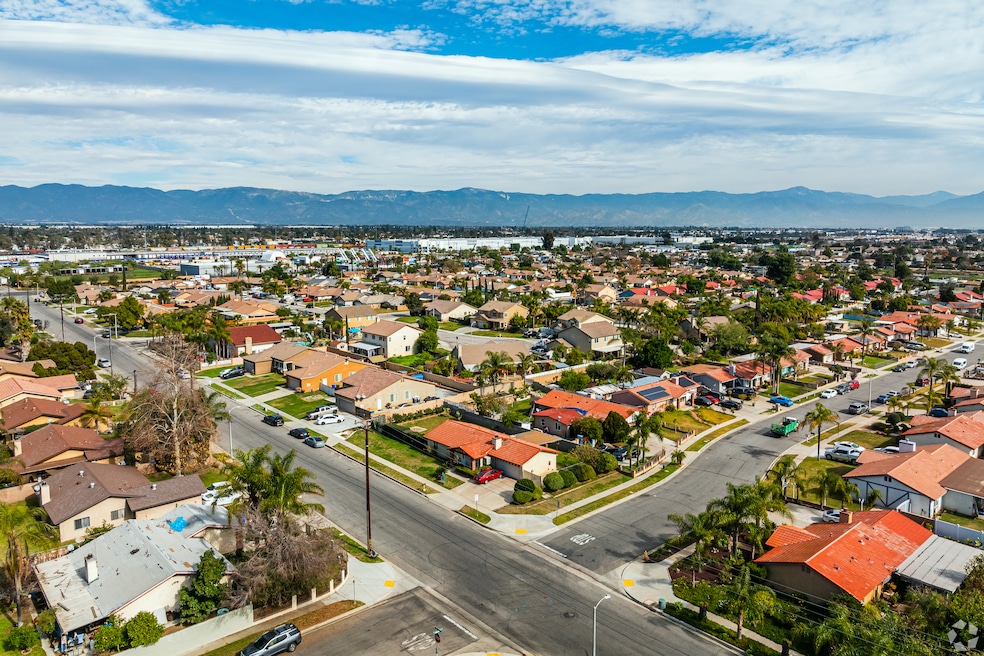Nearly two years after a sprawling business park development received county approval in Southern California, a judge has ordered a pause on all construction of the project in a temporary victory for opponents of warehouse development near residential areas nationwide.
Plans for Bloomington Business Park called for 213 acres in Bloomington, California, to be developed into an industrial property including e-commerce facilities and warehouses. The project includes demolition of 117 houses and an elementary school — and some of those properties have already been razed. Construction has been halted until a report on its potential environmental effects is modified to meet state standards.
The ruling and lawsuit are part of a broader movement that’s been popping up across the country as warehouse development has accelerated to meet growing e-commerce demand at the same time office space has fallen out of favor among corporate tenants. But local communities — especially in Illinois, California and New Jersey — have lobbied against such developments, arguing that they are an encroachment into residential living and exacerbate environmental concerns.
In California, that pushback has been partially focused in the Inland Empire, a region bordering Los Angeles County and Orange County that includes Bloomington and the cities of San Bernardino and Riverside.
The area has been a hot spot for industrial development over the past decade and was one of the largest and most profitable industrial hubs in the United States last year based on inventory and economic output, according to a report from real estate services firm Kidder Mathews. The Inland Empire's residential population, meanwhile, has surged 45% from 2000 to 4.7 million last year, according to census data.
Since the Bloomington project was unanimously greenlit by San Bernardino County in late 2022, it’s received significant resistance from the community and environmental groups, including a lawsuit filed against the county and the developer, Howard Industrial Partners.
And recently, Judge Donald Alvarez of the San Bernardino County Superior Court sided in part with that lawsuit, ruling that the county’s review of the industrial project, including a report to evaluate its environmental impact, did not meet standards set by the state.
A San Bernardino County spokesperson declined to comment on the case because it is still under active litigation. Howard Industrial Partners is appealing parts of the judge’s decision, according to the firm.
Economic benefits
Mike Tunney, vice president at Howard Industrial Partners and the Bloomington project’s spokesperson, said in a statement that his company’s “focus remains on delivering significant benefits to the community.”
Those benefits include more than 3,200 new full-time jobs, 5,400 construction jobs, $500 million in total investments, $69 million in road and flood control improvements, and the building of the area’s first new elementary school in decades.
“We continue to look forward to fulfilling our very significant commitments to the Bloomington community,” Tunney said.
The ruling is a “rare” and “symbolic win” for community advocacy across the nation, according to Susan Phillips, professor of environmental analysis at Pitzer College in Claremont, California.
“This case is like the tip of the iceberg,” she told CoStar News in an interview.
In Deerfield, Illinois, a suburb of Chicago, for example, a total ban on distribution centers was approved earlier this year. And in Roxbury, New Jersey, plans for a large warehouse complex were scrapped in July after nearly two years of local criticism of the project.
And in California, the issue has extended beyond Bloomington. On Sunday, Gov. Gavin Newsom signed a bill placing new restrictions on warehouse development. The law, which takes effect at the start of 2026, includes standards seeking to better protect the health of nearby residents, including rules about where warehouses can be built and construction materials.
The bill also requires that developers replace each unit of housing destroyed for a logistics project with two new units of affordable housing. Developers will also have to provide displaced tenants with 12 months of rent.
Housing shortage
Though the Bloomington win in California is good news for housing proponents, it doesn’t change the work already done in the neighborhood, especially given that the area had low-income housing.
“The damage has been done,” Phillips said. “The neighborhood has been razed to the ground, and so it's a very, very sticky situation.”
The lawsuit that led to the ruling also said that the county failed to provide Spanish-language versions of summaries of the project and did not offer hearings in Spanish "even though a substantial portion of Bloomington’s residents only speak or primarily speak Spanish." It added that the project "will increase the harm to these already overburdened communities."
The residential demolition comes as the nation faces a housing shortage and historically high prices. The problem is especially exacerbated in California, where the median home price is expected to exceed $900,000 next year, nearly double the national median home price, data from the California Association of Realtors showed.
In the Riverside-San Bernardino area, the median house price reached $600,000 as of the second quarter of this year, according to data from the National Association of Realtors.
The halted plan comes as the Inland Empire has had 50 million square feet of new industrial space completed since 2023, about 35% of which is still available for lease, according to a CoStar market report.
Andrea Vidaurre, policy analyst with the People's Collective for Environmental Justice, one of the organizations behind the lawsuit, told CoStar News in a statement the project should not have been approved to begin with. "Homes have already been torn down and harmed," she said.
By the time the judge's ruling was released, 95% of the houses were demolished or were awaiting final approval for demolition, according to Yasmine Agelidis, a senior attorney at the nonprofit firm Earthjustice that litigated the lawsuit.
Most of those houses were unoccupied at the time they were demolished, but at least two were evicted, she told CoStar News.
Vidaurre said there is further litigation against the project in the works.

